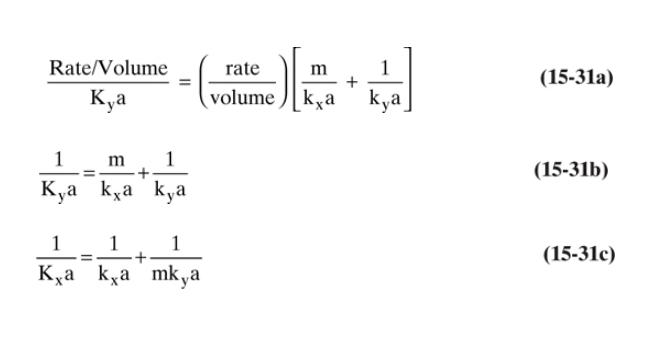Obtaining high purity for medical applications with GP membranes requires a lack of pores and holes. With
Question:
Obtaining high purity for medical applications with GP membranes requires a lack of pores and holes. With thin membranes, ensuring there are no holes is difficult. The PRISM membrane separator uses an asymmetric polysulfone membrane with an approximately \(1.2 \mu \mathrm{m}\) thin skin. Because this skin is not perfect, the membrane is coated with a layer of silicone rubber that is approximately \(1.0 \mu \mathrm{m}\) thick. The silicone rubber flows into any holes in the polysulfone and plugs the holes. The permeabilities for \(\mathrm{H}_{2}\) and \(\mathrm{CO}\) in [ \(\mathrm{cm}^{3}(\mathrm{STP})\) \(\mathrm{cm} /\left[\mathrm{cm}^{2} \mathrm{~s}(\mathrm{~cm} \mathrm{Hg})\right]\) are as follows:

The normal assumption for membrane layers in series is that resistances add [essentially same as adding mass transfer resistances for mass transfer at an interface; see Eq. (15-31)].
 \(\left[\left(\mathrm{P} / \mathrm{t}_{\mathrm{ms}}\right)^{-1}\right]_{\text {total }}=\left[\left(\mathrm{P} / \mathrm{t}_{\mathrm{ms}}\right)^{-1}\right]_{\text {silicone }}+\left[\left(\mathrm{P} / \mathrm{t}_{\mathrm{ms}}\right)^{-1}\right]_{\text {polysulfone }}\)
\(\left[\left(\mathrm{P} / \mathrm{t}_{\mathrm{ms}}\right)^{-1}\right]_{\text {total }}=\left[\left(\mathrm{P} / \mathrm{t}_{\mathrm{ms}}\right)^{-1}\right]_{\text {silicone }}+\left[\left(\mathrm{P} / \mathrm{t}_{\mathrm{ms}}\right)^{-1}\right]_{\text {polysulfone }}\)
Estimate the selectivity of the two-layer membrane for \(\mathrm{H}_{2}\) - \(\mathrm{CO}\).
Step by Step Answer:

Separation Process Engineering Includes Mass Transfer Analysis
ISBN: 9780137468041
5th Edition
Authors: Phillip Wankat





